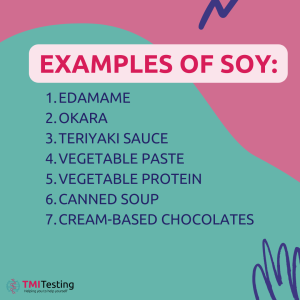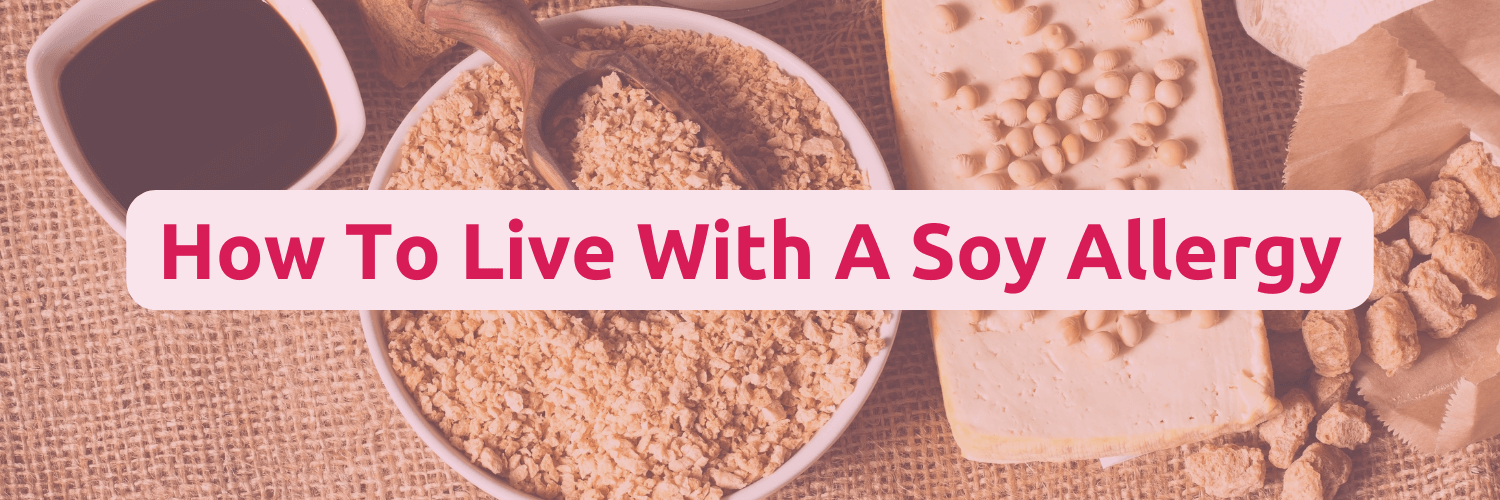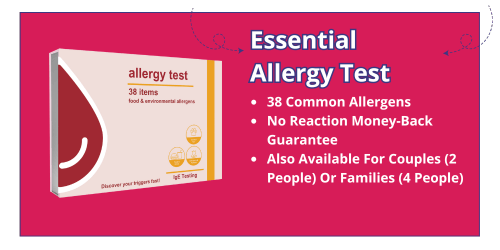Understanding food allergies involves a lot of steps. You should know what you are allergic to definitively, understand what that means for your diet, learn how to identify your triggers, and then figure out how to live your life as easily as possible. Without the correct information, this can be unnecessarily difficult. Make it easier on yourself by learning essential details about how to live with a soy allergy and how allergy testing can help lead you to the accurate information you need for a simple, safe lifestyle. There’s a lot to learn about soya!
What is a soy allergy?
A soy allergy is also known as a soya allergy, as both are the same thing with different spellings. (Soy sauce sounds different than soya sauce, after all). This allergy is a reaction to the proteins that naturally occur in soybeans.
If you have a soya allergy, you’ll find that you react to soybeans in many forms, as discussed below.
Is a soy allergy common?
Soy allergies are rare compared to other kinds of allergies you hear about, including wheat, milk, and peanut allergies. It’s most common in the UK in infants and young children. About 4 in 1000 children have a soya allergy.
Interestingly, about 1 in 10 children who have a milk allergy will also have a soy allergy. Children with soya allergies can also have a peanut allergy. So, even if a soy allergy is not as popular as other childhood allergies, there is sometimes a connection between them!
The good news is that 70% of children with food allergies like these outgrow them by the age of 10.
While this is uncommon, sometimes a soya allergy can cause reactivity to other kinds of legumes, including beans, lentils, or peas. This is called “cross-reactivity,” and it means that the protein in beans is similar to the protein in soya, causing an “accidental” reaction.
Between the possible similar allergies listed above and the cross-reactivity we just discussed, considering allergy testing is a good idea so that you know exactly what you’re dealing with for safety and comfort.
What are the symptoms of a soy allergy?
Soy allergies can have either an immediate allergic reaction or a delayed allergic reaction. An immediate reaction could look like a rash (such as nettle rash) or itching. Other symptoms include swelling of the lips or face or having an itchy throat. Another possibility is feeling sick, vomiting, or having diarrhoea.
A delayed reaction to a soya allergy could resemble a belly ache or a flare-up in a child’s eczema or colic.
How is a soya allergy treated?
If an allergic reaction is mild, you can take an antihistamine to help curb the symptoms until they die down. If the reaction is severe, you should lie down and raise your legs. If you have an adrenaline pen (such as an Epi-Pen), you’ll want to use that until medical help arrives.
Soy allergy triggers
There are quite a few soy allergy triggers that can make it difficult to know how to avoid soy at first. Soya is popular as a vegetarian protein alternative and in lactose-free recipes and traditional cow milk products, to start with.
Many manufactured and processed foods contain soya, about 60%. You’ll want to look for a few different terms to help you know what you’re dealing with in these foods. The most common terms include miso, tofu, bean curd, and textured vegetable protein.
More examples of soy
Here are other common examples of where soya could be “hiding” in many different types of manufactured foods to help you know what else to look for.
- Soya lecithin
- Soya oil
- Soya protein
- Soya shortening
- Tempeh
- Edamame
- Okara
- Teriyaki sauce
- Vegetable paste
- Vegetable protein
- Canned soup
- Cream-based chocolates
- Meal replacement drinks
The good news is that the Food Standards Agency in the UK explains that refined soya oil (the main ingredient used in vegetable oil) is often safe for those with a soya allergy because the proteins are removed during the refining process.
How to live with a soy allergy
If you have a soya allergy, you might wonder what living with this food allergy looks like every day. The good news is that you have some help and support waiting here to help you.
Firstly, you will want to get accurate allergy information through allergy testing to work with the correct information. Once you get that and you determine that you have a soya allergy, you can move into the future with the right guidance.
While rare compared to other food allergies, you will be relieved that soya is considered a major food allergen and is identified on manufactured foods when sold in the EU.
But what about non-packaged foods? You will want to ask the staff at restaurants and cafes about cross-contamination and actual soy-containing food. It is worthwhile to know for your benefit as well as theirs.
Over time, you’ll learn what foods turn out to be safe and which ones require a bit of extra work to know whether they are okay for you to eat. Learning how to live with a soya allergy is the same as any other food allergy that way.
The truth is that finding out you have a food allergy can be upsetting, but you can look at it as a positive thing, too. It is an opportunity to learn how to live with a soy allergy without compromising your quality of life, enjoyment of food, or putting yourself at risk of an allergic reaction. Those are all good things, short-term and long-term! Grab your allergy test from us today and begin your journey to a healthier lifestyle!






